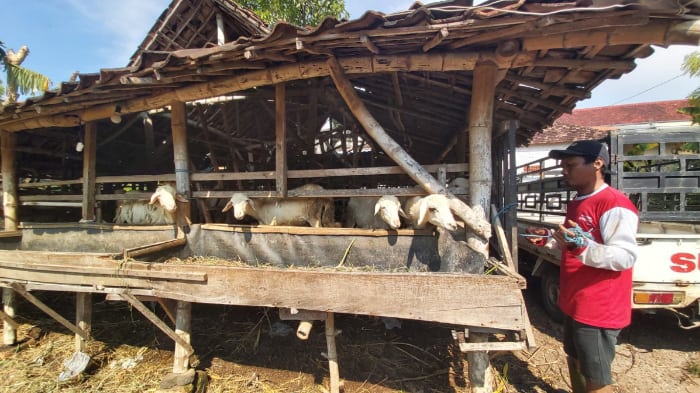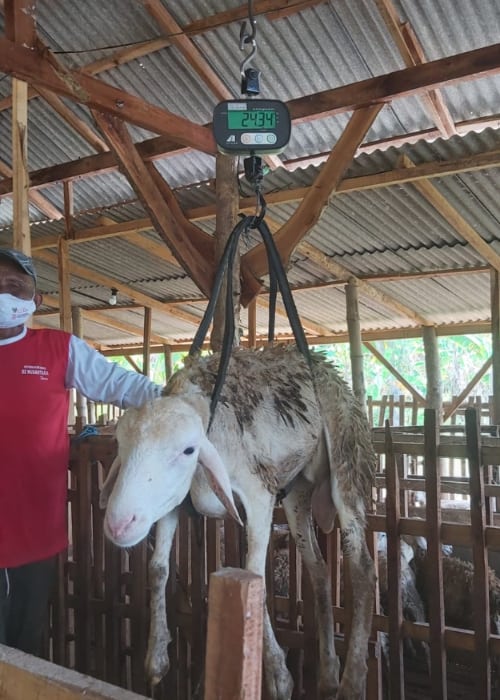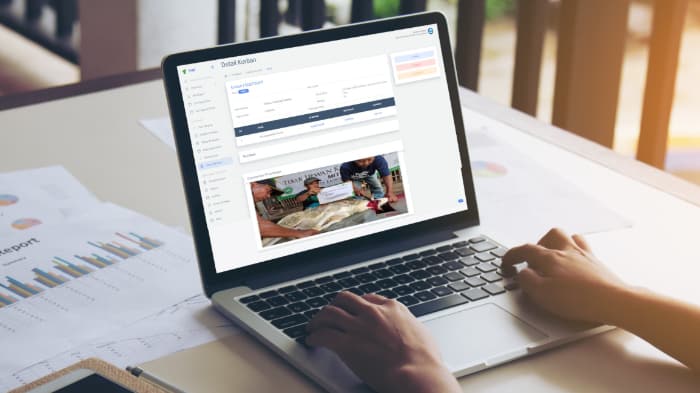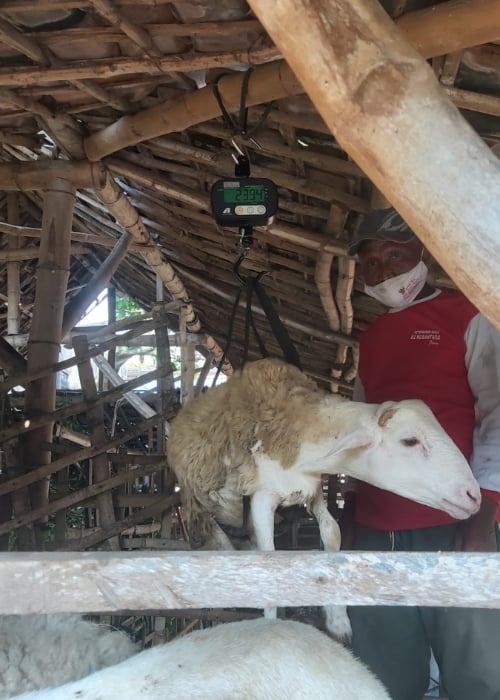LAMONGAN, EAST JAVA — One of the partners of the Dompet Dhuafa Sacrificial Animal Stocking (THK) program admitted that it was greatly helped by the Kurban Information System (KIS) designed by Dompet Dhuafa. The partner is D2 Nusantara Livestock Group in Lamongan, East Java.
Previously, through a networking process, D2 Nusantara Livestock Group joined as a partner of THK Dompet Dhuafa in 2018. But at the beginning of joining, the name of this partner was not the D2 Nusantara Livestock Group, but Harapan Bunda. After completing the program in 2019, D2 Nusantara Livestock Group rejoined as THK Dompet Dhuafa’s partner in 2019.
In 2020, the Covid-19 pandemic hit Indonesia and caused most entrepreneurs to experience difficult times, including farmers. Therefore, in 2020 and 2021, the D2 Nusantara Livestock Group did not become a partner of THK Dompet Dhuafa because it felt the impact of this pandemic.
Baca juga: THK Jangkau Kampung Mualaf di Perbatasan Timur Indonesia

Even in 2022, Indonesia is still in a pandemic, and there is a peak of Omicron in the early to mid-year. In addition, ahead of Eid al-Adha 1443 H, Indonesia was also hit by Hoof and Mouth Disease (FMD), which attacks livestock. However, the D2 Nusantara Livestock Group rejoined THK Dompet Dhuafa in that turbulent year.
In that year, the D2 Nusantara Livestock Group felt the convenience and claimed to be significantly helped by the existence of the Kurban Information System (KIS) designed by Dompet Dhuafa.
“We no longer worry about missing sacrificial person names because, in the previous system, the names were only sent via SMS messages. And often, SMS is sent at night, so friends must stay up late and risk being missed,” said Agus Siswoyo from the D2 Nusantara Livestock Group in the QC process by the Dompet Dhuafa Team, Saturday (18/3/2023).
“Partners have created an account at KIS to update the data of sacrificial person names there; just copy it and then make a signboard,” Agus continued.

KIS is an integrated system explicitly created by Dompet Dhuafa to make it easier for THK partners to report from pre-process to post-sacrifice. In KIS, partners can obtain and verify the sacrificial person’s name. Thus, there is clarity regarding the names, and no names are missed in the process of sacrifice.
In addition, KIS will also assist the process of reporting partners to donors regarding the distribution of sacrificial meat. Previously, Dompet Dhuafa had already created accounts for partners in the KIS system. Next, the partners will fill in data such as the location where the animals were slaughtered, where and to whom the sacrificial meat was distributed. The KIS system will also help partners verify the data they enter.

On the other hand, donors who mandate their sacrifices in Dompet Dhuafa will also always get notifications via SMS or email regarding their sacrificial process from beginning to end. These notifications include verified transaction notices, verified Sacrificial names data, sacrificial slaughter processes, sacrifices that have been slaughtered, sacrifices that have been distributed to beneficiaries, to notices that the sacrificial process has been entirely completed.
In addition to the sacrificial names, partners also feel the ease of use of the KIS system in reporting. According to Agus, partners only need to upload data to the system. If the system rejects the uploaded data, something is wrong, and the system will notify the partner.
Baca juga: Kelola Kurban THK, DD Farm Ronting Jangkau 3963 KK Penerima Manfaat Di Dua Kabupaten

“Anything for the report, just upload it. If it does not match, the system does not accept it. Thus, it makes it easier to identify reports and checklist reports that have been sent or have not been sent,” explained Agus to the QC Team of Dompet Dhuafa.
However, behind the advantages, there will also be disadvantages. Agus Siswoyo also told one drawbacks of this system for people who still stutter with technology. According to Agus, some people in his team still need time to be able to operate this system because of technological knowledge constraints.
“The challenge is that those unfamiliar with current technology will need time to learn. Fortunately, this livestock group team is assisted by young people who are technologically literate,” concluded Agus. (Dompet Dhuafa/THK Team/Ronna)


